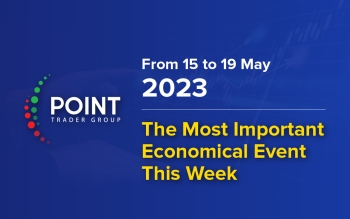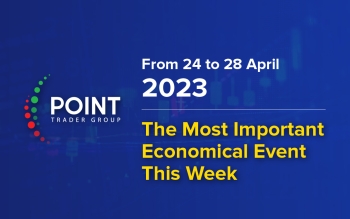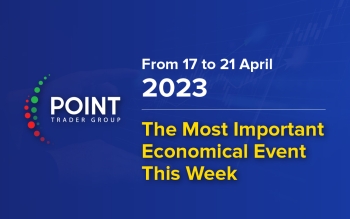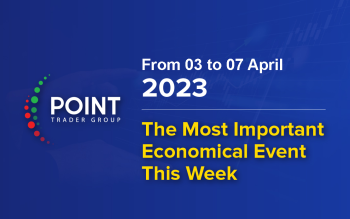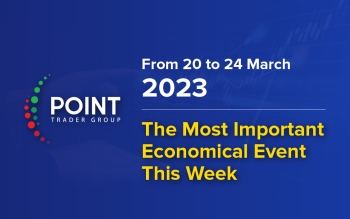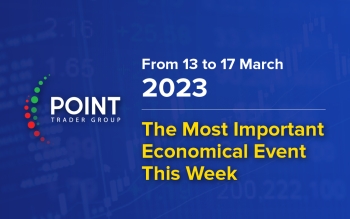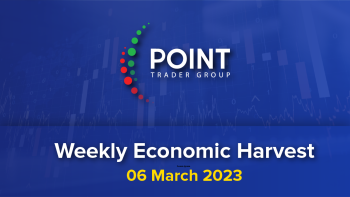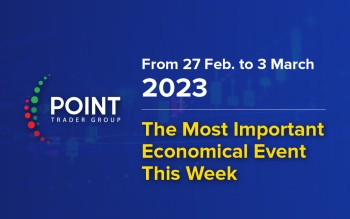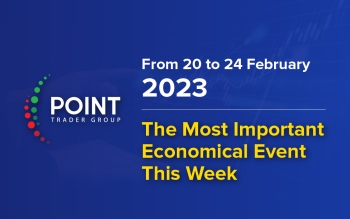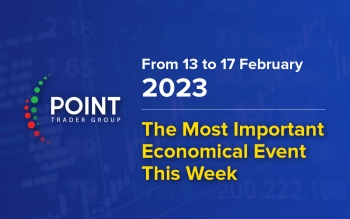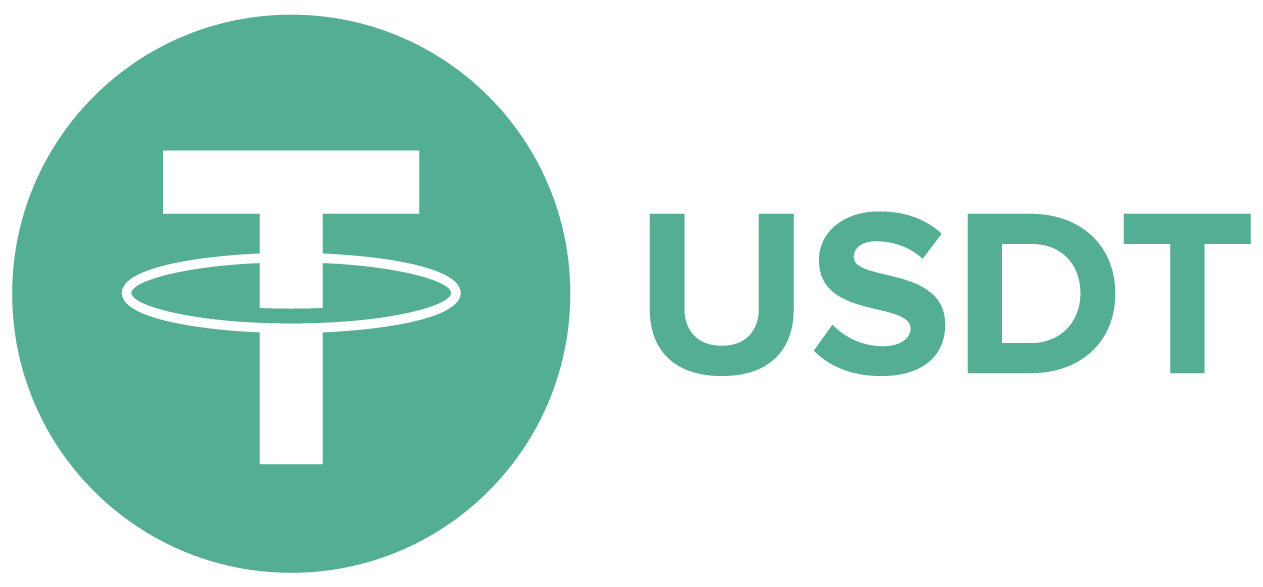The most important Economic events this week from the 13th to the 17th of December 2021
The global recovery from the effects of Covid continues in economic activity.
However, more severe long-term supply bottlenecks and higher-than-expected inflation are likely to slow growth next year compared to our previous forecast. We believe that the recent restrictions introduced across much of the developed world in response to the Omicron variant of COVID-19 will have relatively small impacts on activity, but add uncertainty to the already unclear outlook.
■ We still expect global GDP growth of 5.8% this year, but we are lowering our forecast for 2022 to 4.2% (from 4.6%). Growth may slow further to 3.7% in 2023 as fiscal and monetary stimulus winds down and as we approach the pre-pandemic trend line. These estimates are similar to those of most other forecasters, albeit slightly less optimistic for next year, but slightly more for 2023 than, say, the most recent OECD forecast.
■ US GDP growth is likely to slow from 5.5% this year to 3.5% next year, followed by 2.7% in 2023. This will bring the US GDP level back to its pre-epidemic trend line by the end of 2022 In the Eurozone, we expect GDP growth to slow from 5.0% this year to 3.9% in 2022, followed by 2.9% in 2023. The lower growth forecast is particularly due to Germany (to 3.5% growth in 2022) due to its adoption The biggest on disrupted supply chains. As a result, we now expect lower growth next year in Germany than, for example, in France, Italy and Spain. Eurozone GDP is likely to return to the pre-pandemic trend line by the end of 2023, about one year later than that of the United States.
■ Chinese GDP growth is set to slow to less than 5% in both 2022 and 2023 due to structural forces, spillovers to the broader economy from financial vulnerabilities in real estate, and intensified regulatory action. Other emerging markets, including in Central and Eastern Europe, will also see more moderate growth next year. We lowered our 2022 growth forecast for Central and Eastern Europe as a whole by about 0.5 percentage point, mostly due to lower growth in Germany.
■ While inflation is now higher than we expected, we still see it as a mostly temporary phenomenon, driven mostly by bottlenecks, higher energy prices and fundamental effects, which - on most indicators - will not only end, but will be reversed, in the second half of 22. As a result, we have significantly raised the average inflation forecast for 2022 across the OECD region (to 4.7% in the US and 3.2% in the Eurozone). With the current humps fading through 2022, we will end the year with more natural inflation rates and average inflation in 2023 will be at or below targets in both the US and the Eurozone, at 2.0% and 1.4%, respectively.
■ The stimulus from both fiscal and monetary policies will be gradually reduced. The Fed is likely to end its net asset purchases in early spring, followed by two rate hikes in the second half of 2022, and possibly three more times in 2023. The European Central Bank will reduce its asset purchases as the environmental protection plan expires in order to Peace, but net purchases will continue until 2023, and we don't expect any rate hikes until at least 2024. In most of Central and Eastern Europe, price hikes will continue into the coming year.
■ Markets are very cautious in their prices for the peak Fed funds rate. An upward drift in treasuries yields, accompanied by a downtrend, is likely. In the meantime, with the European Central Bank refraining from raising the deposit rate, bond yields should remain low. Over time, a gradual decline in ECB purchases should lead to a modest slope of the Bund curve. Stuck between sustained above-trend growth and weak support from quantitative easing, but the ECB must remain committed to avoiding financial fragmentation, we expect the 10-year BTP-Bund to be trading on the spread at around 125 basis points for most of 2022.
The most important data expected this week
United State
Retail Sales - Wednesday (3:30 pm Egypt time)
US retail sales rose 1.7% month-on-month in October of 2021, above the upwardly revised 0.8% rise the previous month and above market expectations of 1.4%. It's the strongest gain since March, as consumers spend more on early holiday shopping and gasoline. Sales at non-store retailers recorded the largest increase (4%), followed by sales at gas stations (3.9%); electronics and hardware stores (3.8%); diversified retail stores (2.8%); building materials and garden equipment (2.8%); car dealers (1.8%); sporting goods, hobbies, music and libraries (1.5%); food and beverage (0.9%); general merchandise stores (0.8%); and furniture stores (0.4%). On the other hand, sales of food services and drinking places were stable and decreased by 0.7% in clothing stores and 0.6% in health and personal care. Excluding cars, sales rose 1.7% and sales excluding gasoline increased 1.5%.
Month-on-month retail sales in the US are expected to reach 0.80 percent by the end of this quarter. In the long term, US retail sales are expected to trend around 1.00% in 2022 and 0.40% in 2023.
Fed rate decision - Wednesday (9 pm Egypt time)
During a Senate Banking Committee hearing in Washington on Tuesday, Fed Chair Powell acknowledged that it was appropriate to consider normalizing ultra-accommodative monetary policy at the next meeting, given that the economy is very strong and inflationary pressures are higher. The president also said it was time to stop using the word “temporary” to describe inflation and that the recent emergence of the omicron poses “downside risks to employment and economic activity and increased inflation uncertainty.” The Fed decided on November 3 to begin cutting the monthly pace of net asset purchases by $10 billion for Treasury securities and $5 billion for the agency's mortgage-backed securities to complete the process in mid-2022. The next policy meeting is scheduled for December 15.
The US interest rate is expected to reach 0.25% by the end of this quarter. In the long term, the US federal funds rate is expected to trend around 0.75 percent in 2022 and 1.00 percent in 2023.
Building Permits - Thursday (3:30 pm)
Adjusted data showed that building permits in the United States rose 4.2% from the previous month to a seasonally adjusted annual rate of 1.653 million in October 2021.
Building permits in the US are expected to reach 1700.00 thousand by the end of this quarter. In the long term, US building permits are expected to trend around 1400.00 thousand in 2022 and 1300.00 thousand in 2023
Unemployment Claims Rate - Thursday (3:30 pm)
The number of Americans applying for new unemployment benefits fell by 43 thousand from the previous period to 184 thousand in the week ending December 4, the lowest level since early September 1969 and below market expectations of 215,000, as job demand remains strong amid the economic recovery Ongoing and many employers are seeking to retain employees. The 4-week moving average of claims, which removes the weekly volatility, fell to 218.75 thousand, which is the new lowest level for the epidemic. However, on a seasonally unadjusted basis, initial claims rose by 63.7K to 281K, with notable increases being recorded in California (9.8K), Texas (8.0K), New York (7.9K) and Michigan (4.2K).
Manufacturing PMI
The US IHS Markit manufacturing PMI was revised lower to 58.3 in November 2021, from an initial estimate of 59.1 and slightly below the previous month's final reading of 58.4. The latest figure indicated the weakest pace of expansion in the manufacturing sector since December 2020 amid reports of near-record supply delays and a slowdown in demand. Production growth was the second slowest since September 2020 and new orders rose at least in 11 months. In addition, the rate of job creation has only slowed to a modest pace, however, as labor shortages have hampered efforts to fill existing vacancies. On the price front, input cost inflation set a new record due to higher prices for metals, chemicals and plastics, along with higher freight and transportation costs. Despite the faster increase, production fee inflation fell to its lowest level in three months. Finally, expectations regarding the production outlook over the next year improved to a three-month high.
Canada
Annual inflation rate - Wednesday (3:30 pm Egypt time)
Canada's headline inflation increased to 4.7% in October 2021 from 4.4% the previous month, in line with market expectations. It was the highest inflation since February 2003, amid supply chain problems and low base year effects. Prices rose across all eight major components, with the strongest pressure coming from transportation (10.1% vs. 9.1% in September), the largest increase since March 2003, boosted by energy costs (25.5%). Also, the largest contributions came from shelter (4.8%, as in September) and food (3.8% vs. 3.9%) prices, where a combination of labor shortages, supply chain issues, and higher feed prices pushed up meat product costs sharply. higher (9.9%). Excluding energy, the CPI rose 3.3%, the same pace as in the previous month. On a monthly basis, consumer prices rose 0.7%, accelerating from a 0.2% rise in September, as expected.
Expected:
Inflation in Canada is expected to reach 4.90% by the end of this quarter. In the long term, Canada's inflation rate is expected to trend toward 2.20% in 2022 and 2.50% in 2023.
United kingdom
PMI Composite Index – Thursday (11:30 am Egypt time)
The IHS Markit/CIPS UK Composite PMI came in at 57.6 in November 2021, little changed from the initial estimate of 57.7 and the previous month's final reading of 57.8. The growth of the service sector remained much stronger than the recovery in industrial production, the latter of which was once again affected by the shortage of raw materials and electronics components. The growth of new orders and the pace of job creation remained strong overall, while inflationary pressures continued to rise. Operating expenses across the UK's private sector have been the steepest since January 1998, while prices charged by businesses have also risen at the most rapid pace in more than two decades.
Expected:
The UK Composite PMI is expected to come in at 54.00 by the end of this quarter. In the longer term, the UK composite PMI is expected to move around 53.80 in 2022 and 53.40 in 2023.
Bank of England interest rate decision - Thursday (2 pm Egypt time)
The Bank of England voted 7-2 to keep its benchmark interest rate at a record low of 0.1% during its November meeting, and 6-3 to leave its bond-buying program unchanged, as policymakers weighed concerns about higher prices against downside risks from slowing growth. Global and UK unemployment likely to rise after holiday schemes end in September. The central bank also said that it will likely become necessary to raise interest rates over the coming months in order to bring inflation back to the 2% target. Looking ahead, CPI inflation is now expected to peak at around 5% in April 2022, before retracting materially from the second half of next year, as supply disruption recedes, global demand rebalances, and energy prices stop rising. At the same time, the UK unemployment rate is expected to rise slightly in the fourth quarter of 2021, while the UK's GDP is expected to return to its pre-pandemic level in the first quarter of 2022.
Expected:
The UK interest rate is expected to reach 0.10% by the end of this quarter. In the longer term, the UK interest rate is expected to trend around 1.00% in 2022 and 1.50% in 2023.
Inflation rate - Wednesday (9 am Egypt time)
The UK's annual inflation rate jumped to 4.2% in October of 2021, the highest level since December 2011 and above market expectations of 3.9%. The main upward pressure came from the cost of housing and utilities (6.8% vs. 1.9%), which are electricity (18.8%), gas (28.1%) and liquid fuels (69.1%), reflecting a global rise in energy prices, especially gas, and after the increase in the price ceiling. Energy, which changed on the first of October. Ofgem, the energy regulator, updates its energy price caps twice a year, in April and October, to ensure they reflect changes in the cost of energy supply. Other increased contributions came from transportation prices (9.9% vs. 8.4%), food and beverages (1.2% vs. 0.8%), miscellaneous goods and services (1.3% vs. 1%), and restaurants and hotels (6.3% vs. 5.1%). The monthly inflation rate jumped to 1.1% from 0.3%.
Expected:
UK inflation is expected to reach 4.00% by the end of this quarter. In the long term, UK inflation is expected to trend towards 3.30% in 2022 and 2.20% in 2023.
Retail Sales - Friday (9 am Egypt time)
UK retail sales rose 0.8% monthly in October of 2021, the first gain in six months and above expectations of 0.5%, amid early Christmas shopping. The main contribution to the increase came from sales in non-food stores (4.2%), ie used stores (charity shops and auction houses), toys and games, sports equipment stores, and clothing stores (6.2%). Apparel store sales volumes in October 2021 were only 0.5% lower than pre-pandemic levels in February 2020. In contrast, auto fuel sales fell 6.4% as consumption returned to more typical levels after strong growth in September, and food sales fell by 6.4%. 0.3%. Meanwhile, the percentage of online sales fell to 27.3% in October 2021, the lowest since March 2020 (22.5%) but still much higher than 19.7% in February 2020 before the coronavirus pandemic.
Expected:
On a monthly basis, UK retail sales are expected to reach 0.60 per cent by the end of this quarter. In the longer term, UK retail sales per month are expected to be around 0.70 per cent in 2022 and 0.50 per cent in 2023.
Japan
Trade Balance - Thursday (1:50 am Egypt time)
Japan unexpectedly posted a trade deficit of 67.37 billion yen in October 2021, missing market expectations of a surplus of 310.0 billion yen and shifting from a surplus of 840.79 billion yen in the same month a year earlier. It was the third consecutive month of trade deficit, as exports rose 9.4% year-on-year to 7,184 billion yen while imports jumped 26.7% to 7,251 billion yen. Looking at the first 10 months of the year, the trade gap was at 219.98 billion yen, compared to a surplus of 235.13 billion yen in the same period in 2020.
Expected:
Japan's trade balance is expected to reach -200.00 billion yen by the end of this quarter. In the long term, Japan's trade balance is expected to hover around 500.00 JPY Billion in 2022 and 160.00 JPY Billion in 2023.
Interest Rate - Bank of Japan
Board Member Hitoshi Suzuki said in a letter that the Bank of Japan will continue to discuss whether there is room for further improvement in its monetary policy behavior by carefully balancing the positive and side effects of monetary easing. He added that it is imperative for policymakers to continue to be concerned about the possibility of increasing credit costs due to delays in the economic recovery from the pandemic at home and abroad. “Also, downward pressure on the underlying profitability of financial institutions is likely to continue as a trend even after COVID-19 subsides, reflecting the protracted environment of low interest rates and structural factors.” Regarding the outlook for the Japanese economy, Suzuki noted that for the time being, the downward pressure from the coronavirus vigil is likely to remain on service consumption and the effects of supply-side restrictions on exports and production.
Expected:
The interest rate in Japan is expected to reach -0.10% by the end of this. In the long term, the Japanese interest rate is expected to trend around -0.10% in 2022 and 0.10% in 2023
Australia
Westpac-Melbourne Institute Consumer Confidence Index - Wednesday (1 am Egypt time).
The Westpac-Melbourne Institute index of consumer confidence in Australia rose 0.6% month-on-month to 105.3 in November 2021, as the economy emerged from the pandemic amid successful vaccinations and easing easing in Sydney and Melbourne. Economic conditions in the next 12 months rose 3.3% to 106.6 while those in the next five years rose 2.6% to 111.0. Also, time to purchase a major household item rose 1.8% to 111.9, on the back of rebalancing spending from goods to services before Christmas. Meanwhile, the household's financial economic conditions decreased from last year by 4.5% to 88.1, and the measure of household finances in the next 12 months decreased by 0.7% to 108.9. Moreover, expectations about employment have been at their best since the mid-1990s. “The level of the Consumer Confidence Index is almost identical to the level it was a little over a year ago in October 2020 (105.0) and has been flat for the past two months,” said Westpac Chief Economist Bill Evans.
Expected:
Consumer confidence in Australia is expected to reach 105.00 by the end of this quarter. In the longer term, Australian Consumer Confidence is expected to hover around 98.00 points in 2022
Unemployment rate – Thursday (02:30 am Egypt time).
Seasonally adjusted unemployment in Australia rose to 5.2% in October 2021 from 4.6% the previous month and above market estimates of 4.8%. This was the highest reading since April, amid delta shutdowns in several states before easing in mid-October. The number of unemployed jumped by 81,800 to 707.300 as the number of people looking for full-time work increased by 42,200 to 460,400, and those looking for part-time work only increased by 39,300 to 246.900. Meanwhile, employment unexpectedly declined by 46,300 to 12.84 million, missing market expectations of a 50,000 increase, with part-time employment declining by 5,900 while full-time employment declining by 40,000. The participation rate increased 0.1 point to 64.7 percent, below the estimates of 64.9 percent. The underemployment rate rose 0.3 points to 9.5 percent, and the underemployment rate rose 0.9 points to 14.7 percent. Monthly hours worked in all jobs decreased by 1 million, or 0.1%, to 1,727 million hours.
Expected:
Australia's unemployment rate is expected to reach 5.00% by the end of this quarter. Over the long term, Australia's unemployment rate is expected to trend towards 4.20% in 2022 and 4.00% in 2023.


 English
English



